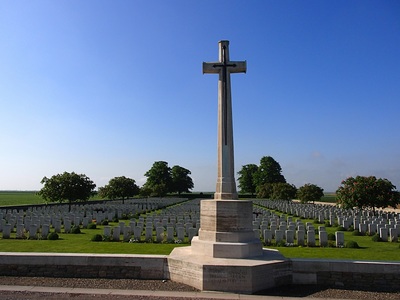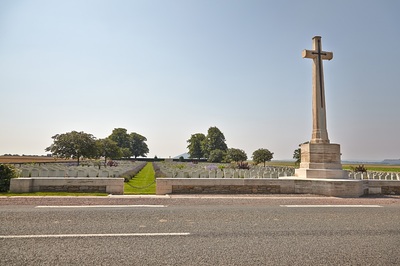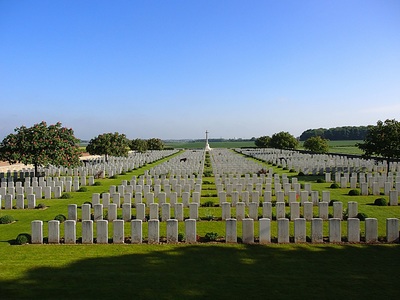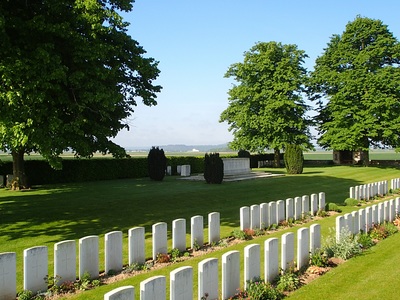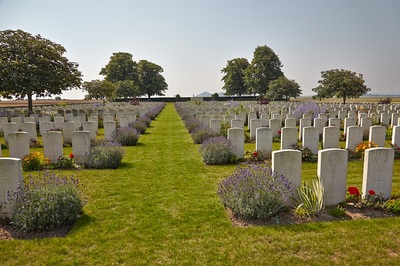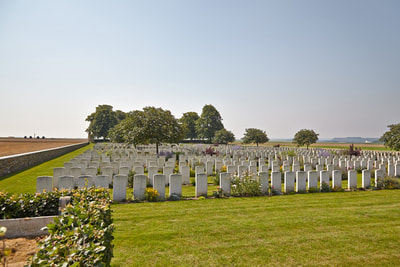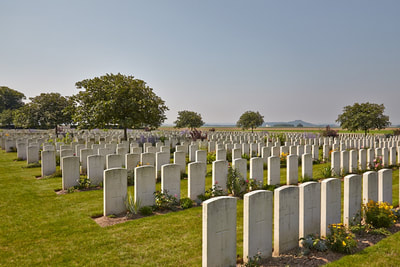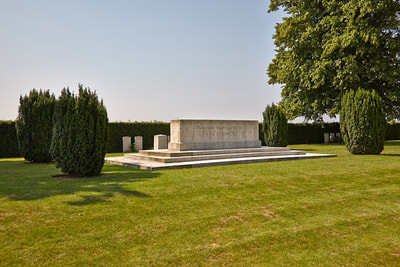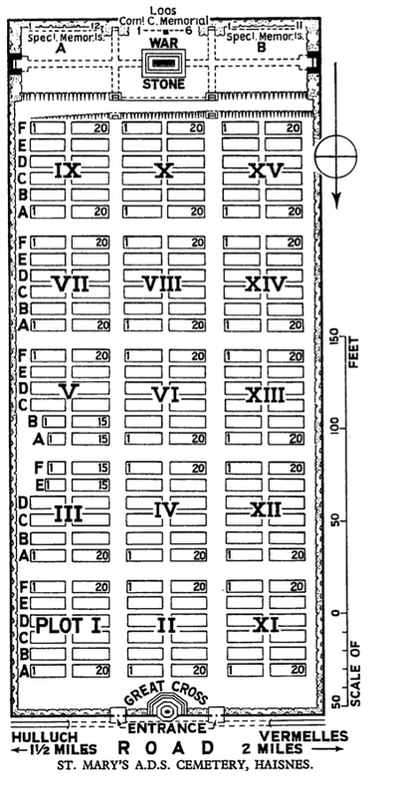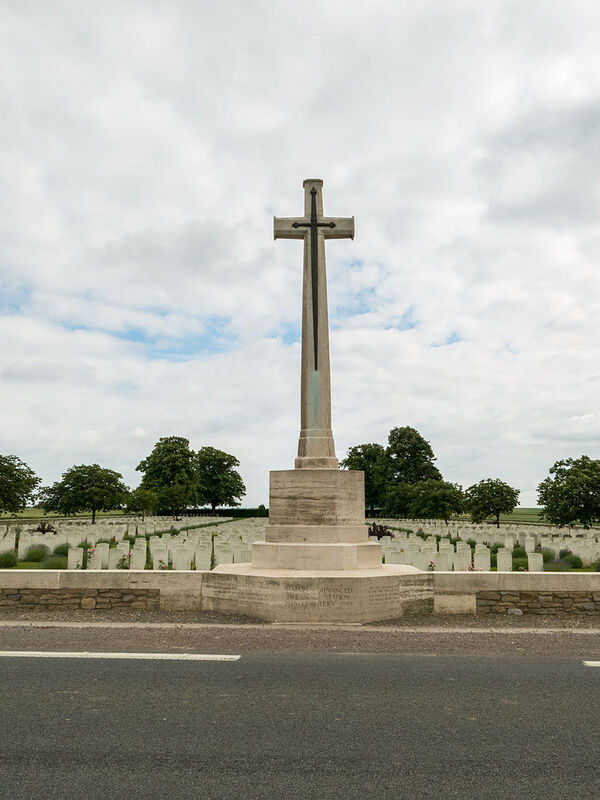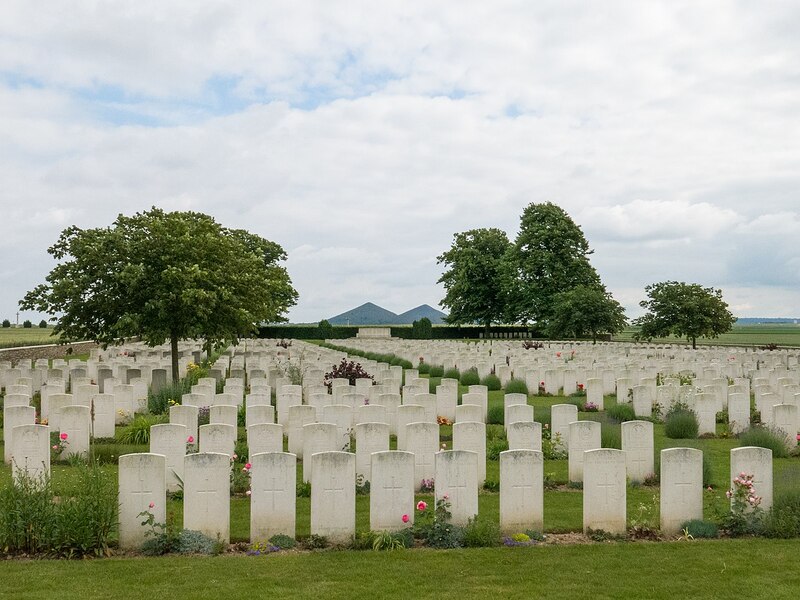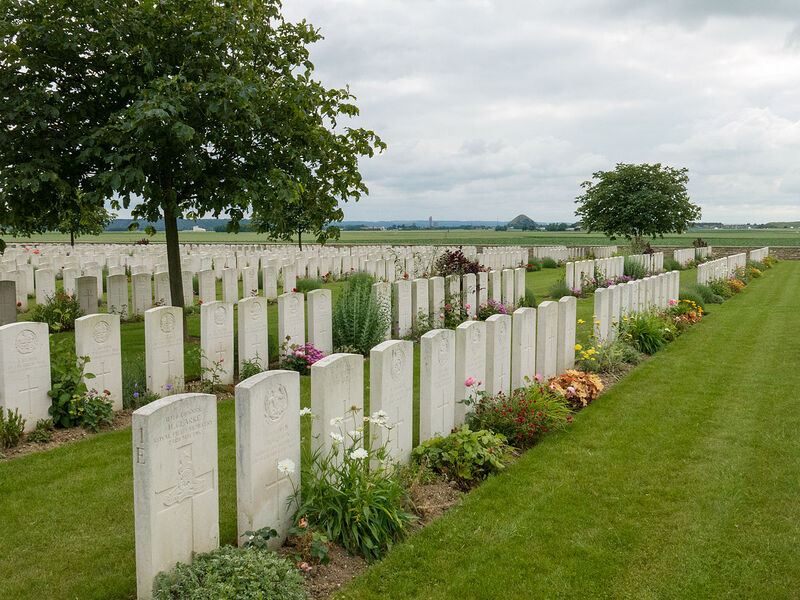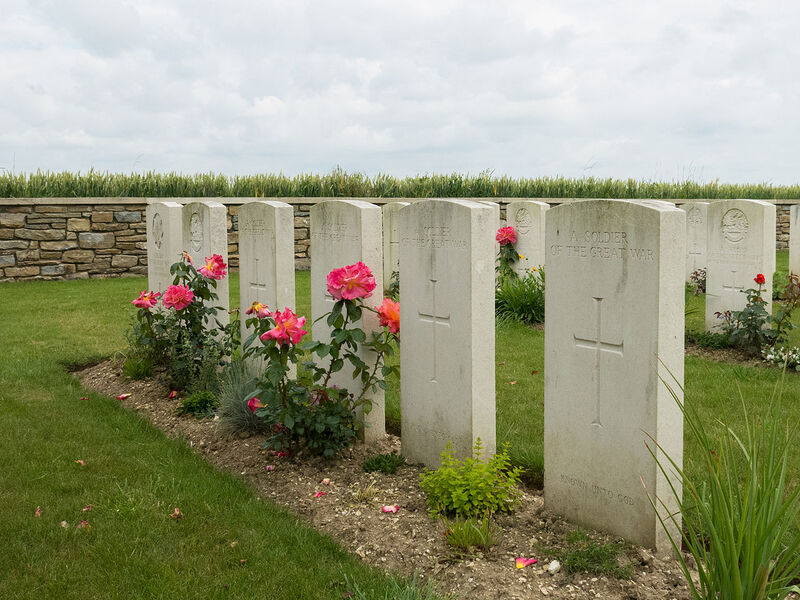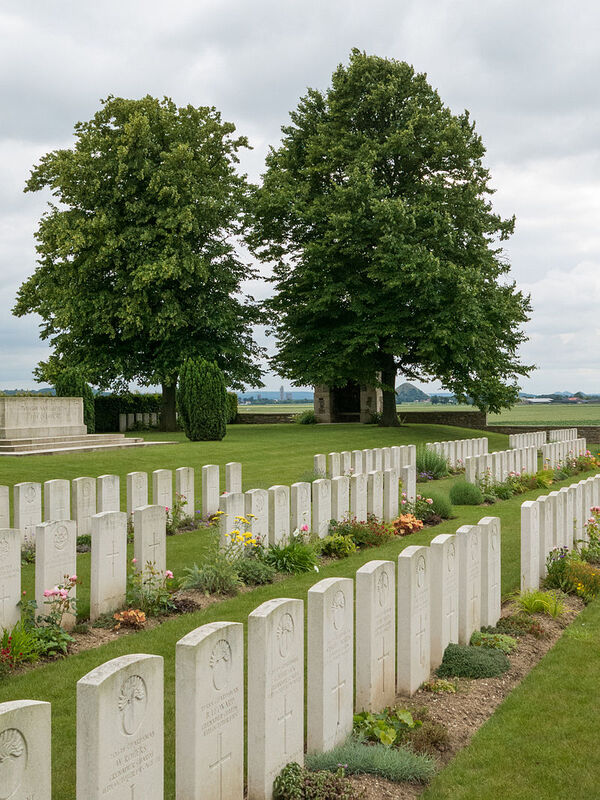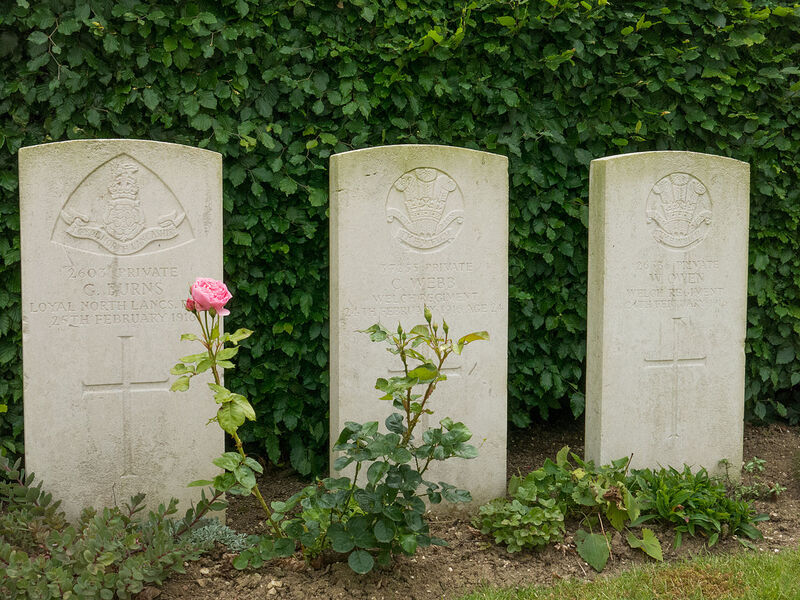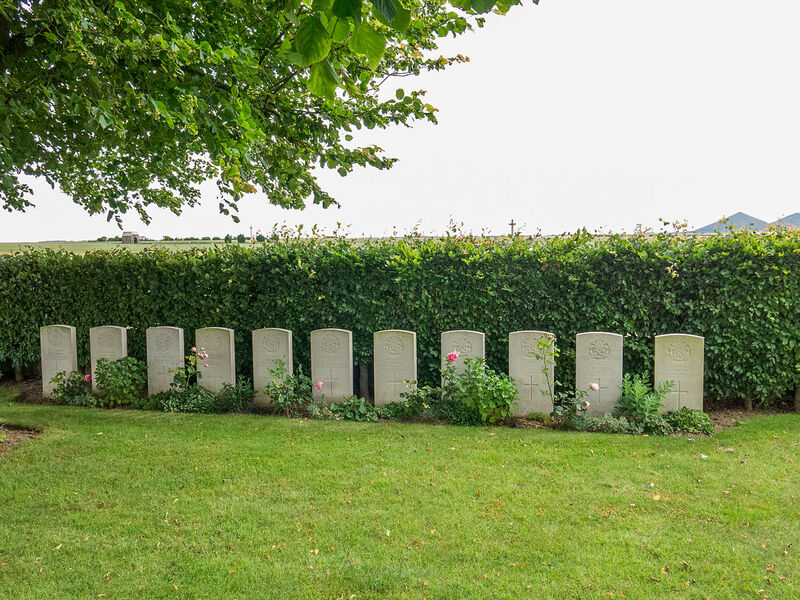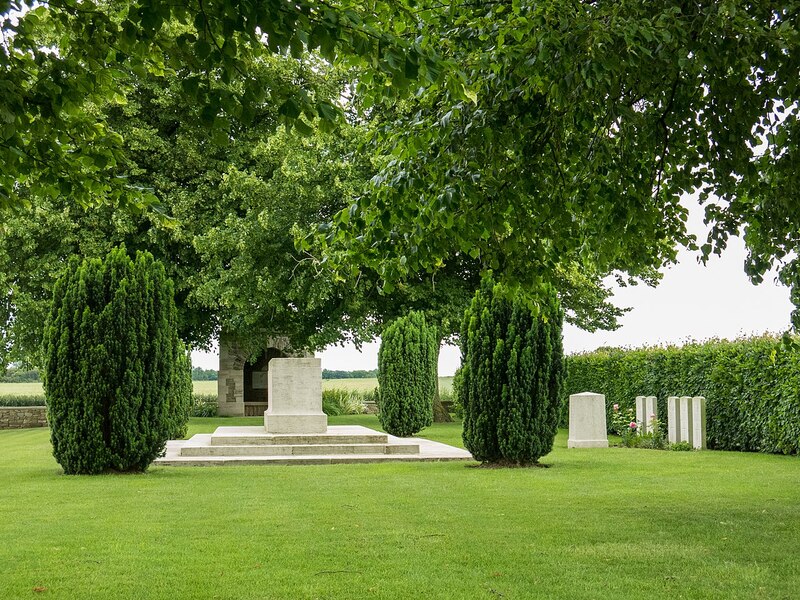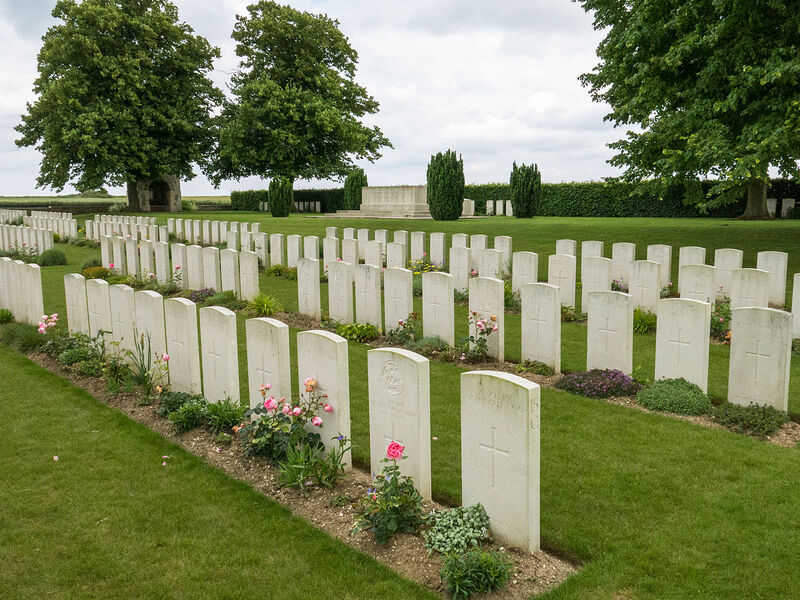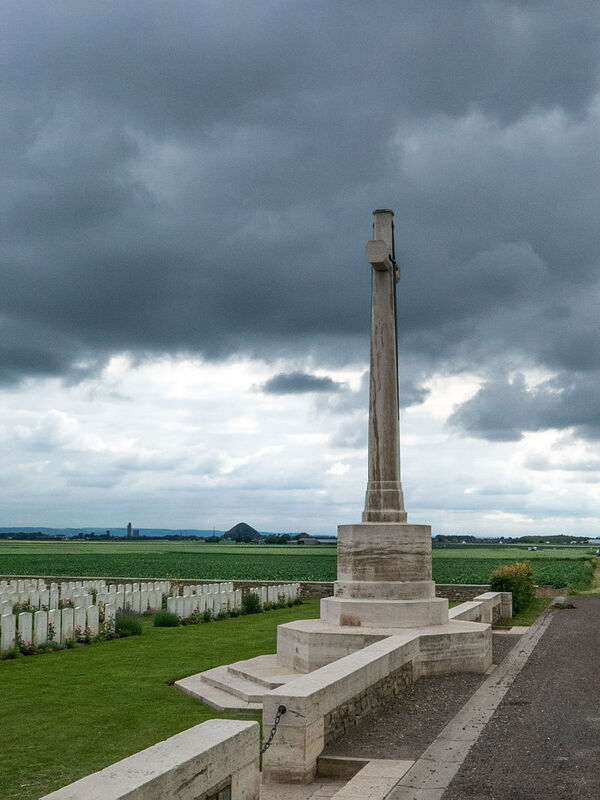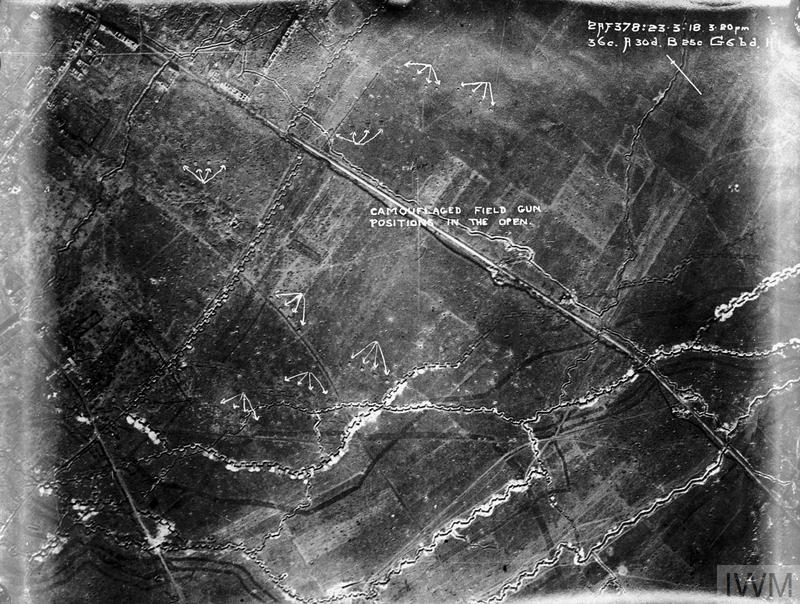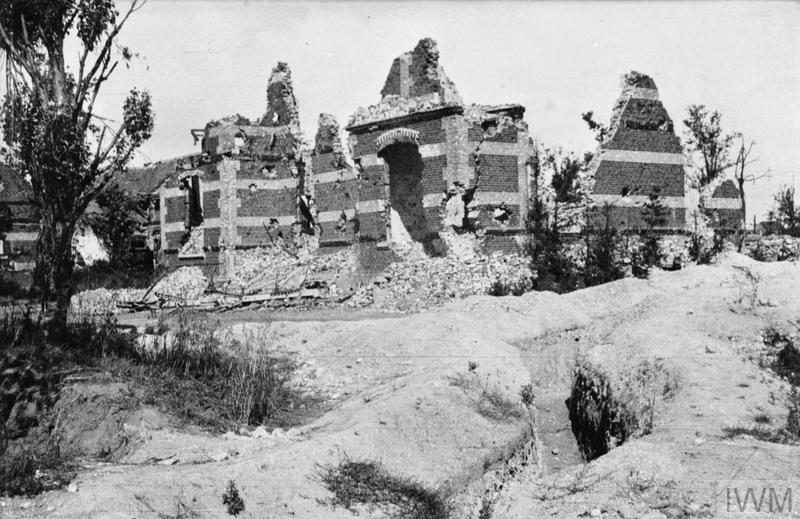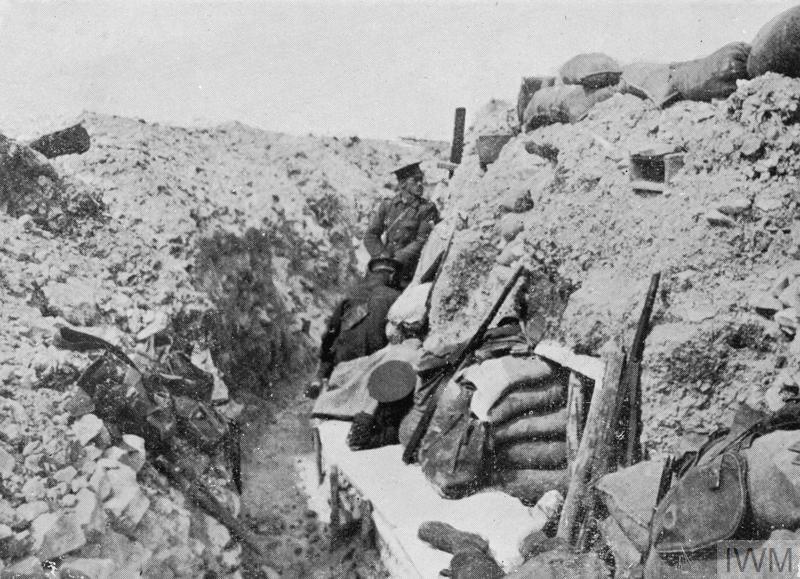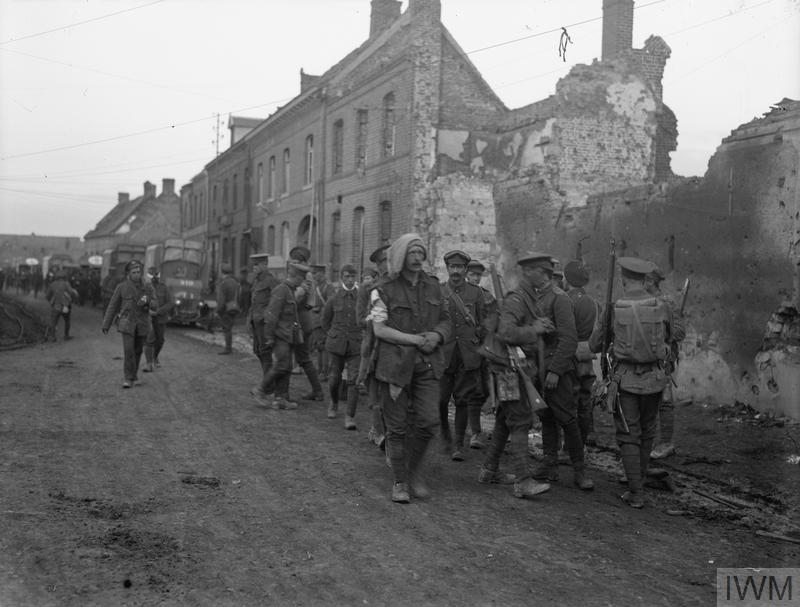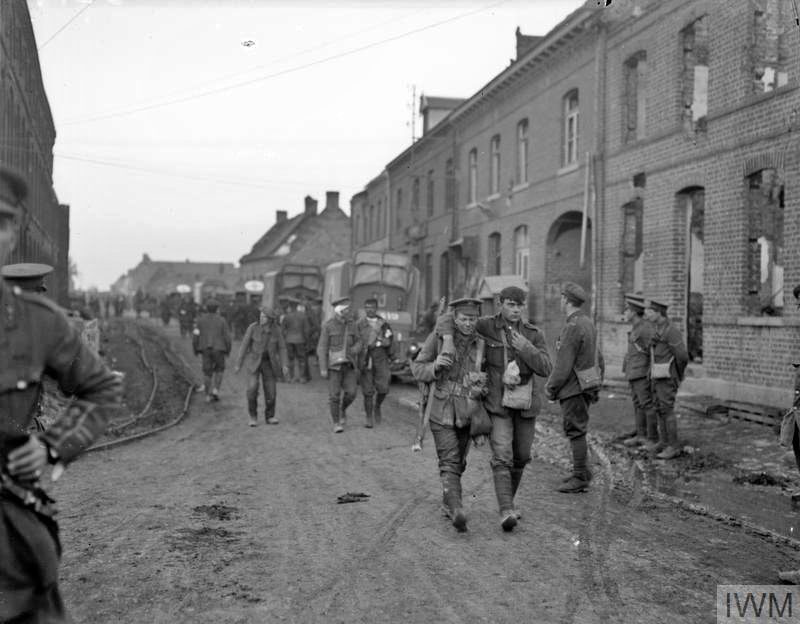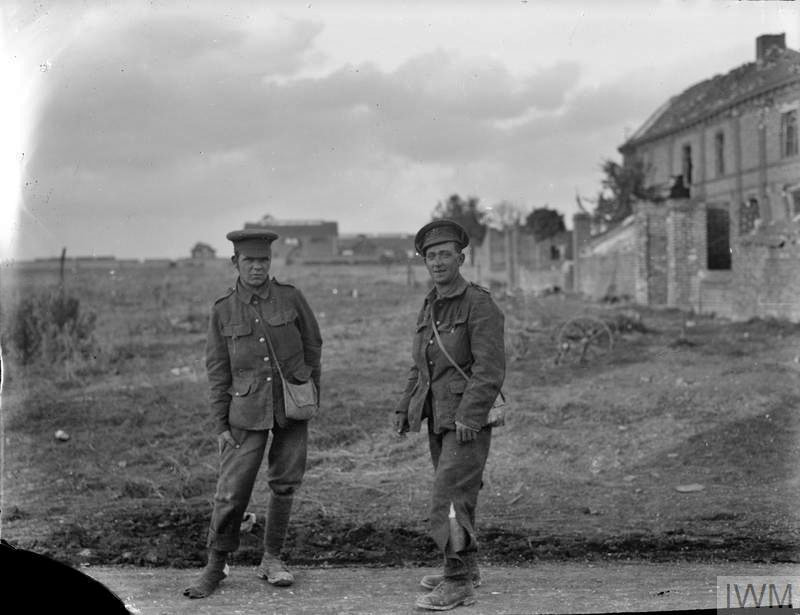ST. MARY'S A. D. S. CEMETERY
Haisnes
Pas De Calais
France
GPS Coordinates - Latitude: 50.48573, Longitude: 2.78906
Location Information
St. Mary's A. D. S. cemetery is located in the vicinity of Haisnes, which lies between the towns of Lens and La Bassee in the Pas-de-Calais. Although the Cemetery lies in open farmland, there are neighbouring towns of Vermelles, Loos-en-Gohelle and Hulluch.
The Cemetery can be reached from the D947, Lens to La Bassee road, and a CWGC signpost is visible on this road. The Cemetery is on the D39, Hulluch to Vermelles road.
Visiting Information
Wheelchair access is possible via the main entrance.
Historical Information
The village was reached, or nearly reached, by the 9th (Scottish) and 7th Divisions on the 25th September 1915, the first day of the Battle of Loos; and parts of the commune were the scene of desperate fighting in the Actions of the Hohenzollern Redoubt (13th-15th October, 1915). No further advance was made in this sector until October 1918, when the enemy withdrew his line.
"St. Mary's Advanced Dressing Station" was established, during the Battle of Loos, and the cemetery named from it is at the same place. The cemetery was made after the Armistice, by the concentration of graves from the battlefield of Loos; the great majority of the graves are those of men who fell in September and October 1915.
The only defined burial ground from which graves were brought to this cemetery was:-
LOOS COMMUNAL CEMETERY, on the South-West side of the town, in which nine soldiers from the United Kingdom were buried in February 1916, and which was subsequently ruined by artillery fire.
There are now nearly 2,000, 1914-18 war casualties commemorated in this cemetery. Of these, over two-thirds are unidentified and Special Memorials are erected to 23 soldiers from the United Kingdom, known or believed to be buried among them. Six other special memorials record the names of soldiers from the United Kingdom, buried in Loos Communal Cemetery, whose graves were destroyed by shell fire.
The cemetery covers an area of 6,097 square metres and is enclosed by a low rubble wall.
There was at one time a French cemetery of 800 graves on the opposite side of the road; but in 1922 these graves were removed to Notre Dame-de-Lorette French National Cemetery.
Casualty Details: UK 1791, Canada 19, Total Burials: 1810.
St. Mary's A. D. S. cemetery is located in the vicinity of Haisnes, which lies between the towns of Lens and La Bassee in the Pas-de-Calais. Although the Cemetery lies in open farmland, there are neighbouring towns of Vermelles, Loos-en-Gohelle and Hulluch.
The Cemetery can be reached from the D947, Lens to La Bassee road, and a CWGC signpost is visible on this road. The Cemetery is on the D39, Hulluch to Vermelles road.
Visiting Information
Wheelchair access is possible via the main entrance.
Historical Information
The village was reached, or nearly reached, by the 9th (Scottish) and 7th Divisions on the 25th September 1915, the first day of the Battle of Loos; and parts of the commune were the scene of desperate fighting in the Actions of the Hohenzollern Redoubt (13th-15th October, 1915). No further advance was made in this sector until October 1918, when the enemy withdrew his line.
"St. Mary's Advanced Dressing Station" was established, during the Battle of Loos, and the cemetery named from it is at the same place. The cemetery was made after the Armistice, by the concentration of graves from the battlefield of Loos; the great majority of the graves are those of men who fell in September and October 1915.
The only defined burial ground from which graves were brought to this cemetery was:-
LOOS COMMUNAL CEMETERY, on the South-West side of the town, in which nine soldiers from the United Kingdom were buried in February 1916, and which was subsequently ruined by artillery fire.
There are now nearly 2,000, 1914-18 war casualties commemorated in this cemetery. Of these, over two-thirds are unidentified and Special Memorials are erected to 23 soldiers from the United Kingdom, known or believed to be buried among them. Six other special memorials record the names of soldiers from the United Kingdom, buried in Loos Communal Cemetery, whose graves were destroyed by shell fire.
The cemetery covers an area of 6,097 square metres and is enclosed by a low rubble wall.
There was at one time a French cemetery of 800 graves on the opposite side of the road; but in 1922 these graves were removed to Notre Dame-de-Lorette French National Cemetery.
Casualty Details: UK 1791, Canada 19, Total Burials: 1810.
Images in this gallery © Werner Van Caneghem
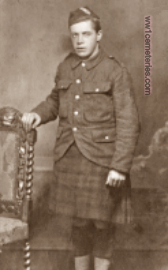
S/9964 Private
John Joseph Casciani
9th Bn. Black Watch (Royal Highlanders)
29th April 1916, aged 19.
Plot I. B. 13.
Son of Joseph and Catherine Casciani, of 183, Overgate, Dundee.
His headstone bears the inscription: "On Whose Soul Sweet Jesus Have Mercy R.I.P."
John Joseph Casciani
9th Bn. Black Watch (Royal Highlanders)
29th April 1916, aged 19.
Plot I. B. 13.
Son of Joseph and Catherine Casciani, of 183, Overgate, Dundee.
His headstone bears the inscription: "On Whose Soul Sweet Jesus Have Mercy R.I.P."
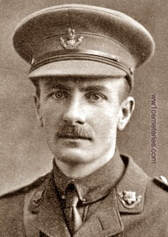
Captain
Robert Sylvester John Faulknor
1st Bn. The Loyal North Lancashire Regiment
25th September 1915, aged 27.
Sp. Mem. A. 11.
Son of Lt. Col. A. A. M. M. Faulknor (Indian Army) and Laura M. I. de Carteret, his wife, of 2, Rock Terrace, Trinity Rd., Jersey.
His headstone bears the inscription: "The Souls Of The Righteous Are In The Hands Of God."
Robert Sylvester John Faulknor
1st Bn. The Loyal North Lancashire Regiment
25th September 1915, aged 27.
Sp. Mem. A. 11.
Son of Lt. Col. A. A. M. M. Faulknor (Indian Army) and Laura M. I. de Carteret, his wife, of 2, Rock Terrace, Trinity Rd., Jersey.
His headstone bears the inscription: "The Souls Of The Righteous Are In The Hands Of God."
Lieutenant John Kipling
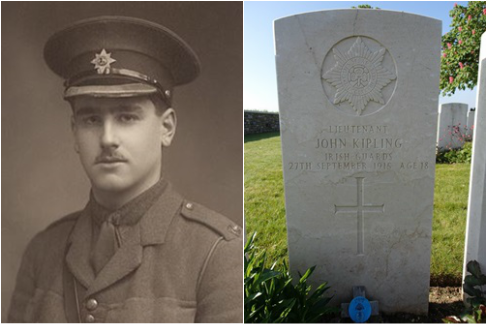
John "Jack" Kipling (17 August 1897 - 27 September 1915) was the only son of the British author Rudyard Kipling. He was killed at the Battle of Loos while serving with the British Army during the First World War, a few weeks after his eighteenth birthday.
He is a central character in the 1997 play 'My Boy Jack' and its 2007 film adaptation.
Born in 1897, Kipling was the youngest of three children of the author Rudyard Kipling and his American wife Caroline Starr Balestier. He was born at "The Elms" at Rottingdean in Sussex, which was the Kiplings' home between 1897 and 1902. He was educated at Wellington College, Berkshire.
Kipling was 16 when war broke out in August 1914. His father was a keen imperialist patriot who was soon writing propaganda on behalf of the British government. He sought to get his son John a Commission but John Kipling was rejected by the Royal Navy due to severe short-sightedness. He was also initially rejected from the British Army for similar reasons. However, his father was friends with Frederick Roberts, 1st Earl Roberts, commander of the British Army, and Colonel of the Irish Guards, and through this influence, Kipling was commissioned as a Second Lieutenant in the 2nd Battalion of the Irish Guards having just turned 17 in August 1914. After reports of the Rape of Belgium and the sinking of the RMS Lusitania in 1915, Rudyard Kipling came to see the war as a crusade for civilization against barbarism and was even more keen that his son should see active service.
After completing his training, John Kipling was sent to France in August 1915 (his father was already there on a visit, serving as a war correspondent).
The casualty rate amongst junior officers in the trenches was extremely high, much higher than NCOs or other ranks - on average, a junior officer leading from the front survived six weeks before becoming a casualty (killed or injured).
Kipling was reported injured and missing in action in September 1915 during the Battle of Loos. A shell blast had apparently ripped off his face. With fighting continuing, his body was not identified.
His parents searched vainly for him in field hospitals and interviewed comrades to try to identify what had happened. A notice was published in The Times on 7 October 1915 confirming the known facts were that he was "wounded and missing".
The death of John inspired Rudyard Kipling to become involved with the Commonwealth War Graves Commission and write a wartime history of the Irish Guards. The poem 'My Boy Jack' also alludes to the wartime loss of a son, although its themes are rather nautical.
The Grave of Kipling was reportedly identified in 1992, and he is officially listed as buried in St Mary's ADS Cemetery in Haisnes However, other research suggests that this grave may be of another officer, that of Arthur Jacob of the London Irish Rifles. The first biography of Kipling including this research and was published by military historians Tonie and Valmai Holt to coincide with the film.
(Source: Wikipedia)
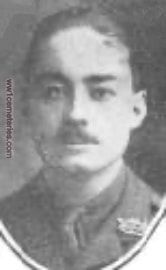
Lieutenant
George Godfrey Whitney Leary
10th Bn. Gloucestershire Regiment
25th September 1915.
Sp. Mem. A. 5.
His headstone bears the inscription: "Their Glory Shall Not Be Blotted Out."
George Godfrey Whitney Leary
10th Bn. Gloucestershire Regiment
25th September 1915.
Sp. Mem. A. 5.
His headstone bears the inscription: "Their Glory Shall Not Be Blotted Out."
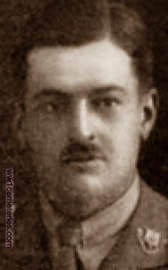
Second Lieutenant
Alan George Hilton Livesey
3rd Bn. attd. 1st Bn. The Loyal North Lancashire Regiment
25th September 1915, aged 27.
Sp. Mem. A. 9.
Son of Frank and Georgiana F. Livesey, of "Broadparks," Pinhoe, Exeter.
His headstone bears the inscription: "Be Thou Faithful Unto Death And I Will Give Thee A Crown Of Life Rev.II.10."
Alan George Hilton Livesey
3rd Bn. attd. 1st Bn. The Loyal North Lancashire Regiment
25th September 1915, aged 27.
Sp. Mem. A. 9.
Son of Frank and Georgiana F. Livesey, of "Broadparks," Pinhoe, Exeter.
His headstone bears the inscription: "Be Thou Faithful Unto Death And I Will Give Thee A Crown Of Life Rev.II.10."
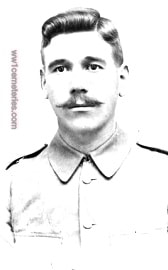
9748 Company Serjeant-Major
William Henry Maddocks
1st Bn. Royal Welsh Fusiliers
25th September 1915, aged 28.
Plot X. B. 20.
Son of Mrs. Harriet Maddocks, of 3, Alma Place, Argyle St., Nechells, Birmingham.
His headstone bears the inscription: "Gone But Not Forgotten."
William Henry Maddocks
1st Bn. Royal Welsh Fusiliers
25th September 1915, aged 28.
Plot X. B. 20.
Son of Mrs. Harriet Maddocks, of 3, Alma Place, Argyle St., Nechells, Birmingham.
His headstone bears the inscription: "Gone But Not Forgotten."

Lieutenant
Geoffrey Wathen Robinson
No. 4 Coy. 10th Bn. Gloucestershire Regiment
25th September 1915, aged 20.
Sp. Mem. A. 6.
Son of Kossuth and Mary Selina Robinson. of 47, Downleaze, Stoke Bishop, Bristol. His brothers Clifford Kossuth and Edward Coslton Robinson also fell.
His headstone bears the inscription: "I Thank My God Upon Every Remembrance Of You."
Geoffrey Wathen Robinson
No. 4 Coy. 10th Bn. Gloucestershire Regiment
25th September 1915, aged 20.
Sp. Mem. A. 6.
Son of Kossuth and Mary Selina Robinson. of 47, Downleaze, Stoke Bishop, Bristol. His brothers Clifford Kossuth and Edward Coslton Robinson also fell.
His headstone bears the inscription: "I Thank My God Upon Every Remembrance Of You."
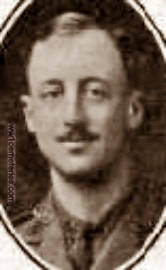
Captain
Edward Hanson Sale
10th Bn. Gloucestershire Regiment
25th September 1915.
Sp. Mem. A. 3.
His headstone bears the inscription: "Their Glory Shall Not Be Blotted Out."
Edward Hanson Sale
10th Bn. Gloucestershire Regiment
25th September 1915.
Sp. Mem. A. 3.
His headstone bears the inscription: "Their Glory Shall Not Be Blotted Out."
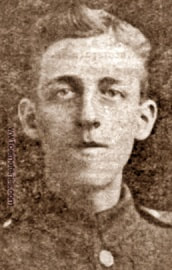
52090 Private
Arthur Salt
6th Bn. Somerset Light Infantry
12th September 1918.
Plot VIII. E. 20.
Arthur Salt
6th Bn. Somerset Light Infantry
12th September 1918.
Plot VIII. E. 20.

10950 Private
William Shipp
2nd Bn. Grenadier Guards
11th October 1915.
Plot IX. D. 10.
William Shipp
2nd Bn. Grenadier Guards
11th October 1915.
Plot IX. D. 10.
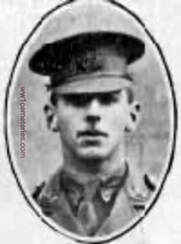
Captain
John William Collis Tongue
10th Bn. Gloucestershire Regiment
25th September 1915, aged 23.
Sp. Mem. A. 1.
Son of John H. and Sarah J. Tongue, of 402, Nechells Park Rd., Birmingham.
His headstone bears the inscription: "In "His" Keeping."
John William Collis Tongue
10th Bn. Gloucestershire Regiment
25th September 1915, aged 23.
Sp. Mem. A. 1.
Son of John H. and Sarah J. Tongue, of 402, Nechells Park Rd., Birmingham.
His headstone bears the inscription: "In "His" Keeping."
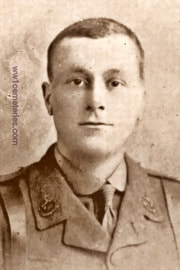
Second Lieutenant
Thomas William Watts
9th Bn. The King's (Liverpool Regiment)
25th September 1915, aged 25.
Plot I. E. 14.
Son of Lt.-Col. Luther Watts and Mrs. Luther Watts, of "Sinhala" Aughton, Ormskirk, Lancs.
His headstone bears the inscription: "He Gave His Life And Left The Rest To God He Ever Lives In The Hearts Of Those For Whom He Died."
Thomas William Watts
9th Bn. The King's (Liverpool Regiment)
25th September 1915, aged 25.
Plot I. E. 14.
Son of Lt.-Col. Luther Watts and Mrs. Luther Watts, of "Sinhala" Aughton, Ormskirk, Lancs.
His headstone bears the inscription: "He Gave His Life And Left The Rest To God He Ever Lives In The Hearts Of Those For Whom He Died."


